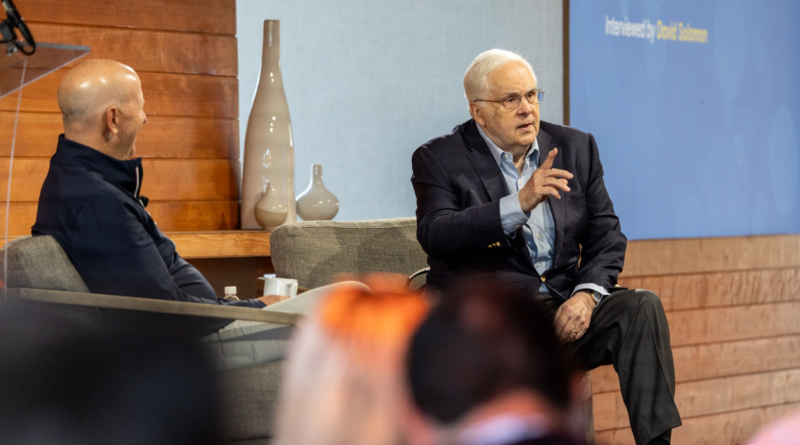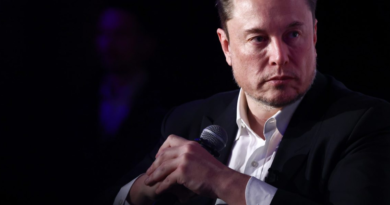FedEx founder says corporate data predicted the rise of Tesla and Nvidia—and can flag new trends
Long before Fred Smith was the billionaire founder of FedEx, he was a Vietnam veteran with a love of flying and a small fleet of planes for hire. “I would be flying these parts and pieces from Xerox in Rochester to Pittsburgh or wherever the case may be,” he told a gathering of 200 Goldman Sachs executives and entrepreneurs on Thursday. “And I would sort of sit in amazement there and say, ‘They’re hiring me and this whole damn airplane to carry this little part.’”
It didn’t take long for the likes of early tech giants Burroughs, Sperry, UNIVAC and IBM to hire him and his growing fleet to fly parts from the burgeoning Asian manufacturing market to the rest the world. “What I was actually seeing was the beginning of the automation of society,” he said.
It was the first time his logistics company found itself at the extreme forefront of tech trends that would change the world.
Speaking at Goldman’s annual Builders and Innovators Summit in Healdsburg, California, Smith explained how data from the logistics giant that now moves about $2 trillion worth of goods a year in every industry in nearly every country predicted the rise of Tesla and Nvidia and is now seeing into the future of geopolitical tensions and more.
“We just have this kaleidoscope of what’s going on in the economy,” he said. “And so we’re able to think we see trends.”
Smith founded FedEx in 1971 in Little Rock, Arkansas to solve business logistics problems. Since those days when he personally made delivery runs, Smith says the company’s greatest technological breakthrough was software that let it track goods in motion.
“We had gotten to the point where we were buying more PCs than any entity in the world,” said Smith. “And we were putting them in our customers’ offices so the shipping managers could track and trace and prepare the shipping labels.”
The company now operates more than 700 aircraft and more than 200,000 motorized vehicles, generating $87.7 billion revenue in fiscal year 2024, and $21.6 billion last quarter. But it’s the data provided by that software that lets FedEx track goods that provides the company with the trend-spotting super-power.
For example, Smith says the company is currently shipping Nvidia chips from Guadalajara up the west coast of the United States and pallets from John Deere to Europe. Last year, FedEx added a Danone S.A. executive focused on Mexico to its board of directors, and earlier this year expanded service between the U.S. and Europe, specifically to open up opportunities to China.
In fact, Smith highlighted China obstacles and opportunities as another example of a trend FedEx data reveals. “What has happened, more than anything else,” he said, “is supply chains have regionalized on a China Plus One basis.” China Plus One is an increasingly popular business strategy which dictates that investors looking to capitalize on China’s booming economy should also invest in another market.
For example, he says FedEx is seeing spikes in activity in Eastern Europe, particularly in Hungary and Poland. In southern Mexico, there are 1,000 properties that are either manufacturing plants under construction or fulfillment and distribution centers where there’s land in reserve—many of which are owned by Chinese entities.
Such interconnectedness that blurs the lines separating nations, complicates the whole idea of imposing sanctions on one nation or another. As a result, Smith is skeptical that the tariffs imposed on imports by both Biden and Trump before him will resolve the geopolitical tension. To support his skepticism, he cites research by the Financial Times that he says shows tariffs slow trade for everyone. Instead, he thinks properly recognizing the interconnectedness of global markets might lead to more measured solutions.
“Everybody looks at China as a monolithic entity,” he said. “There’s a business class in China that doesn’t want to be wiped out either, as China has become more protectionist. And if you go into a FedEx hub today, you’ll be amazed at the choreography of stuff going from every part in the world to every other part in the world.”




